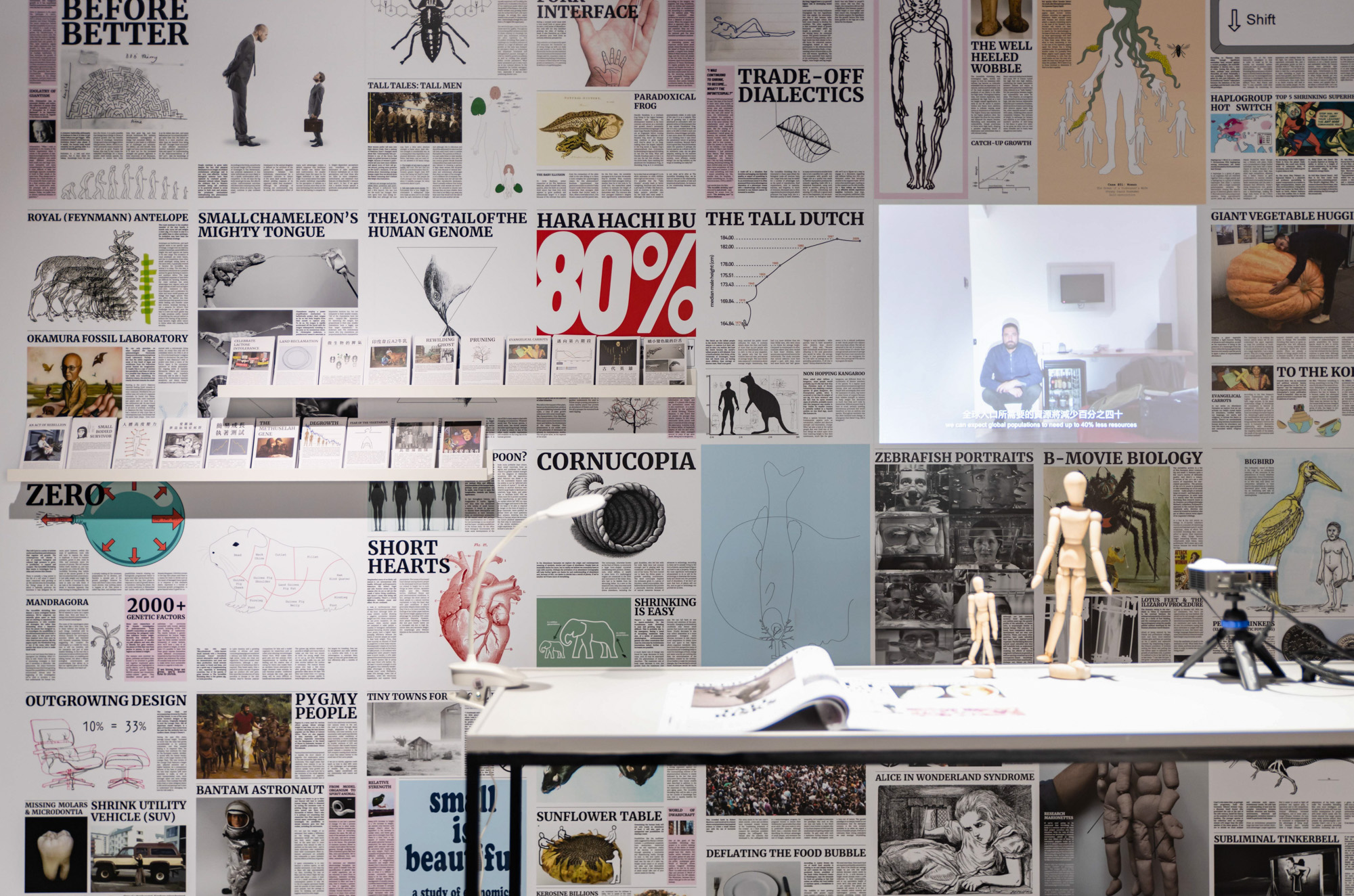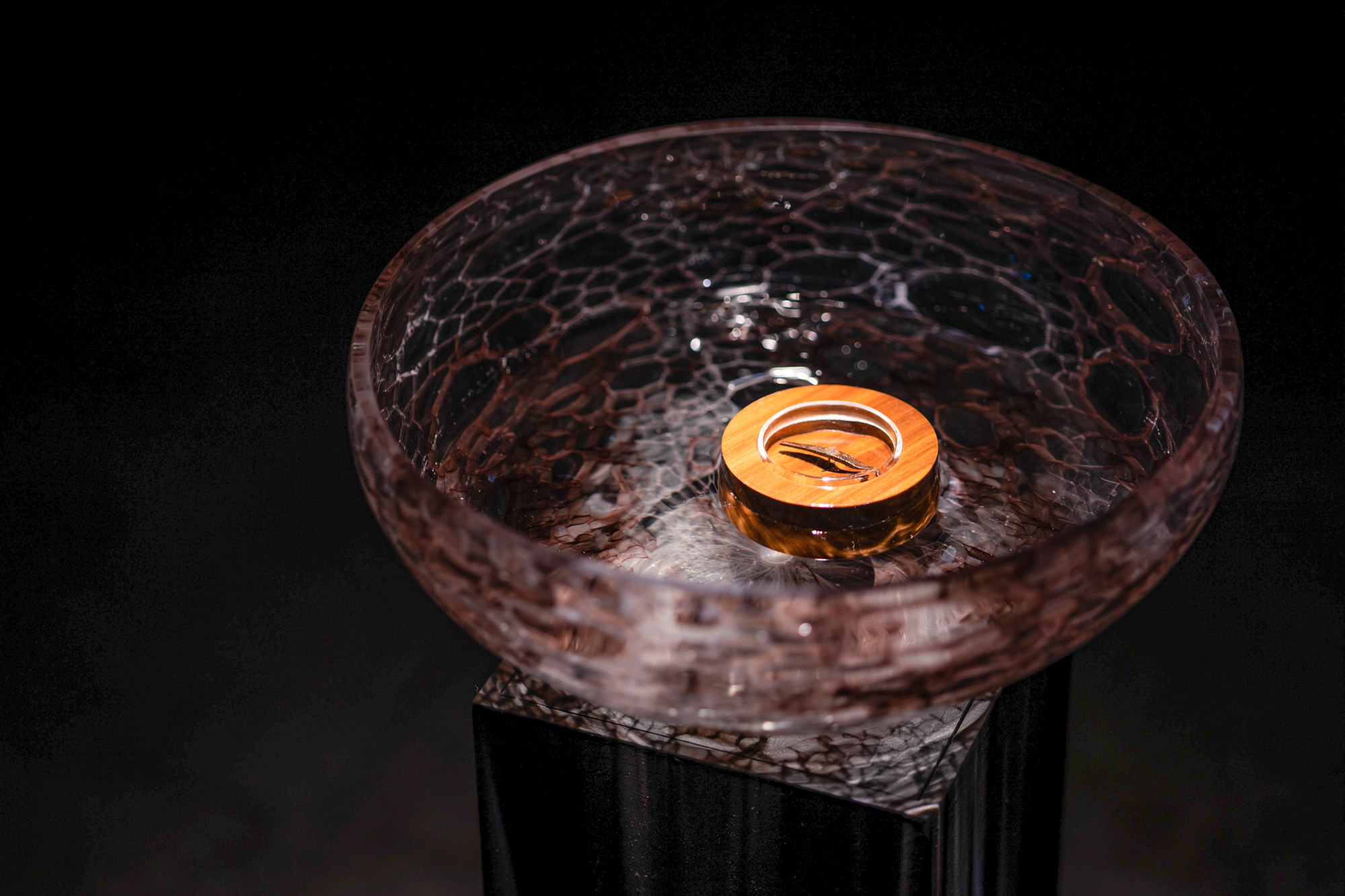“Fictional Life: Hybridity, Transgenetics, Innovation”
By Christopher Whitfield

Installation view of HUANG ZAN-LUN
In Orion J. Facey’s 2020 novel The Virosexuals, the protagonist Amygdala injects herself with “Fever” before launching herself into the depths of a club. As she explores, revelers share vials of gangrene, HIV, and other “zeases” as casually as a round of lagers. At the beginning of 2021, her already surreal bender feels particularly beyond the realm of imagination. However, from the bio-hacked and virtually augmented perspective of her not-so-distant future, “when the cure is tomorrow, illness can hardly even be called illness.” Amygdala’s sentiment is a wild mutation of the provocations of political scientist Francis Fukuyama. His insistence that advances in biotechnology will usher in the obsolescence of human life as we know it similarly underscored curator Chih-Yung Aaron Chiu’s exhibition “Fictional Life: Hybridity, Transgenics, Innovation,” at the Taiwan Contemporary Culture Lab (C-Lab) in Taipei. In a historical moment where retreating from social spaces in order to keep illness at bay feels for many like the limits of what is humanly possible, through the fictive qualities of bio-art Chiu reminds us of the limitless formations of possible selves that technological enhancement can provide.
When one meets the vacant, watery gaze of the animatronic sculpture David (2013), he pounds his skull against the glass window of his large containment crate. Engineered to have flushed alabaster skin and glassy blue eyes, Huang Zan-Lun’s imposing Aryan satyr sketches a grim portrait of biological tampering. The figure’s yearning for freedom is listless, his mechanical desire merely an echo of an originary humanity buried under blonde fur and horns. Still, the diorama is loud, and David’s thumping reverberated through the gallery, creating at the exhibition’s entrance an ominous atmospheric fiction that warned of the possibilities within. Huang’s work embraces body horror, casting David as a cautionary rendition of Fukuyama’s promise of a departure from humanity, and a corruption of the mythology of progress through biotechnological advancement.

Installation view of ARNE HENDRIKS

Detailed installation view of CECILIA JONSSON
An alternate vision of human transmogrification takes on optimistic zeal in The Incredible Shrinking Man (2010– ). Dutch artist Arne Hendriks’s ongoing project posits that smaller humans require a smaller pool of resources, a panacea to a planet in crisis. Drawing from over a decade of research, Hendriks presented a big wall of little-propaganda, comprising both scholarly and literary testaments to the virtues of all things tiny. Broadsheet-style posters recount the tragic story of the world's tallest man, romanticized speculation about the prospective adventures of pint-sized astronauts, and detailed studies of the Cassanovan sex lives of smaller-than-average dung-beetles. On tables below, an illustrated copy of Gulliver’s Travels (1726) by Jonathan Swift sat alongside other children's picture books that are similarly captivated by the magic of being small. Hendriks’s conflation of niche science with whimsical fictions verses his audience in the imaginative strategies necessary for realizing such downsized biological futures.
In Chiu’s exhibition, the triumph of such literary-feeling works is the centering of social change in an exploration of what it means to progress past contemporary humanity. Both the melancholy of Huang’s hauntingly eugenicist chimera, and Hendriks’s adamance about the de-escalation of growth-obsessed economic models attest to the importance of societal considerations in imagining alternative biological futures. Much work in the exhibition explores wondrous feats of ambitious biological experimentation, such as Swedish artist Cecilia Jonsson’s compass needle crafted through the miraculous refining of iron from human placenta. Though impressive, the application of such experiments feels far-flung, less pertinent than the shift in attitude encouraged by more speculative works. Indeed, without such grounding it is unclear where these experiments might lead.

Installation view of LIN PEI-YING
At the top of the gallery, Lin Pei-Ying claimed to have been transported from the year 2210 to host Virophilia (2018–20), a tasting menu of food with viruses as the key ingredient. As though a Michelin-starred alternative to Amygdala’s nightclub, the project attempts to reframe our relationship with biological factors such as viruses that exist in our environment through the pleasure of food. As video documentation of the Zoom-conferenced dinner showed real-life diners tuck into a feast of influenza mayonnaise and virally congealed marine algae, the promise of shifting human subjectivity mediated by biotechnological innovation leapt from the gallery to the plate. “Fictional Life” ushered these possibilities from the not-so-distant-future a little bit closer to our present.
“Fictional Life: Hybridity, Transgenetics, Innovation” is on view at Taiwan Contemporary Culture Lab, Taipei, until May 23, 2021.






